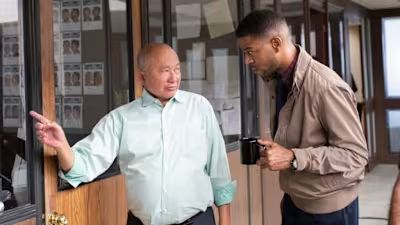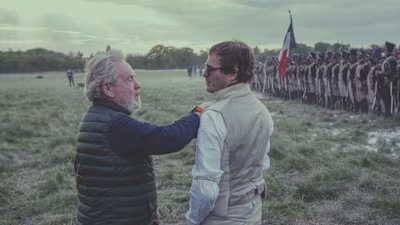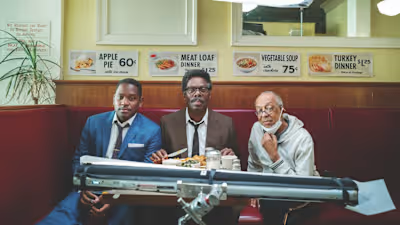Drive-Away Dolls: How Ethan Coen and Tricia Cooke’s Long Marria…
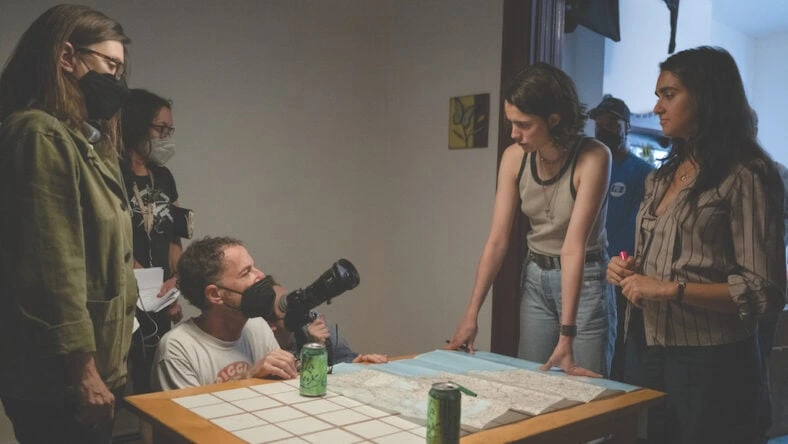
(L to R) Writer/producer Tricia Cooke, director/writer/producer Ethan Coen, actor Margaret Qualley, and actor Geraldine Viswanathan on the set of DRIVE-AWAY DOLLS, a Focus Features release. Credit: Wilson Webb / Working Title / Focus Features
The backstory of Drive-Away Dolls begins in the winter of 1989, when a recent New York University film grad named Tricia Cooke traveled to New Orleans and worked on the Coen brothers film Miller’s Crossing.
Joel and Ethan Coen were already being recognized as masterful filmmakers for their noir debut Blood Simple and the delirious comedy Raising Arizona. But that’s not why Cooke went to New Orleans.
“I didn’t really know their work. I don’t think I’d seen Blood Simple. In fact, I remember, I was at NYU and Joel and Ethan came and screened Raising Arizona at NYU and all my friends were going,” says Cooke. “I was like, “No, I’m gonna go see Koyaanisqatsi.”
She worked on a few movies in New York after graduating from film school, and someone happened to put in a good word for her with Miller’s production manager.
“I didn’t go seeking the Coen brothers,” she explains. “I just went seeking a job.”
She ended up working with the film’s cinematographer, Barry Sonnenfeld, a few years before he would go on to direct hits like The Addams Family and Men in Black. She liked the camera department, but had other ambitions.
“I let Ethan and Joel know that I really wanted to work as an editor, and asked if they had any positions available in New York as an apprentice,” says Cooke. “Apparently they already had an apprentice, but they made room for me too, so that was kind.”
Cooke hit it off with Ethan Coen almost immediately. But they wanted different things.
“Ethan asked me on a date and we went to see Drugstore Cowboy,” she says. “I told him, ‘I’m a lesbian, I’m not interested.’”
So they became friends for a while. But the relationship evolved. They married in 1993, and had two kids.
They also made amazing films together: Cooke, now very much a fan of the Coens’ work, was the assistant editor of their 1991 film Barton Fink and 1994 follow-up The Hudsucker Proxy. And Cooke became the editor of their 1998 The Big Lebowski, 2000’s O Brother, Where Art Thou?, and 2001’s The Man Who Wasn’t There. She edited the latter with the brothers, who used their editing pseudonym, Roderick Jaynes.
But sometime after that, Joel and Ethan Coen started using Final Cut to edit. And Cooke came to a personal decision involving her kids.
“As they got a little older, I realized they were going to grow up and I wasn’t going to be able to spend any time with them if I was in the cutting room 10 to 12 hours a day, which is often the case,” says Cooke. “So I decided to slow down and start writing more.”
She co-directed a documentary with her friend Jennifer Arnold called Where the Girls Are, a comedic short about the history, parties and conflicts of the Dinah Shore Weekend, a giant lesbian pool party in Palm Springs. Itwon the Outstanding Narrative Short Film at Outfest in 2003.
She also co-directed the 2008 short “Don’t Mess With Texas” with Carrie Schrader. Cooke co-wrote the film, about two young lesbians who run into trouble at a diner, with Coen.
“Being married to Ethan and being queer there’s always a little disconnect sometimes,” she laughs. “I wanted to be able to make queer films as well.”
Coen and Cooke decided in the aughts that they should write a feature screenplay, which they originally called Drive-Away Dykes.
“We wrote Drive-Away Dykes together many, many years ago as a way for us to spend time together,” says Cooke.
By then, the couple were no longer in a traditional partnership.
“We have a very non-traditional marriage and relationship where there’s a bigger unit,” says Cooke. “I have a partner and Ethan has another partner.”
She adds: “It’s not easy sometimes and it can be very difficult for even our friends and family to understand. You navigate it one day at a time. We’ve been in this kind of dynamic for over 20 years, and we still take it one day at a time.”
“It’s funny because our whole relationship is like, “What, me worry?” says Coen, quoting Mad Magazine poster boy Alfred E. Newman. “And that’s also the movie.”
So that’s the backstory of Drive-Away Dolls. Or Drive-Away Dykes. Whichever you prefer.
Not that they shared all of it with their cast.
“I feel like they refrained from making it too personal — always kept it vague. Which is what’s so beautiful about their work. It’s open for interpretation,” says Geraldine Viswanathan, one of the film’s stars.
Adds another, Margaret Qualley:“I think they’re the very best at what they do. Working with them is simple — and being simple isn’t so easy.”
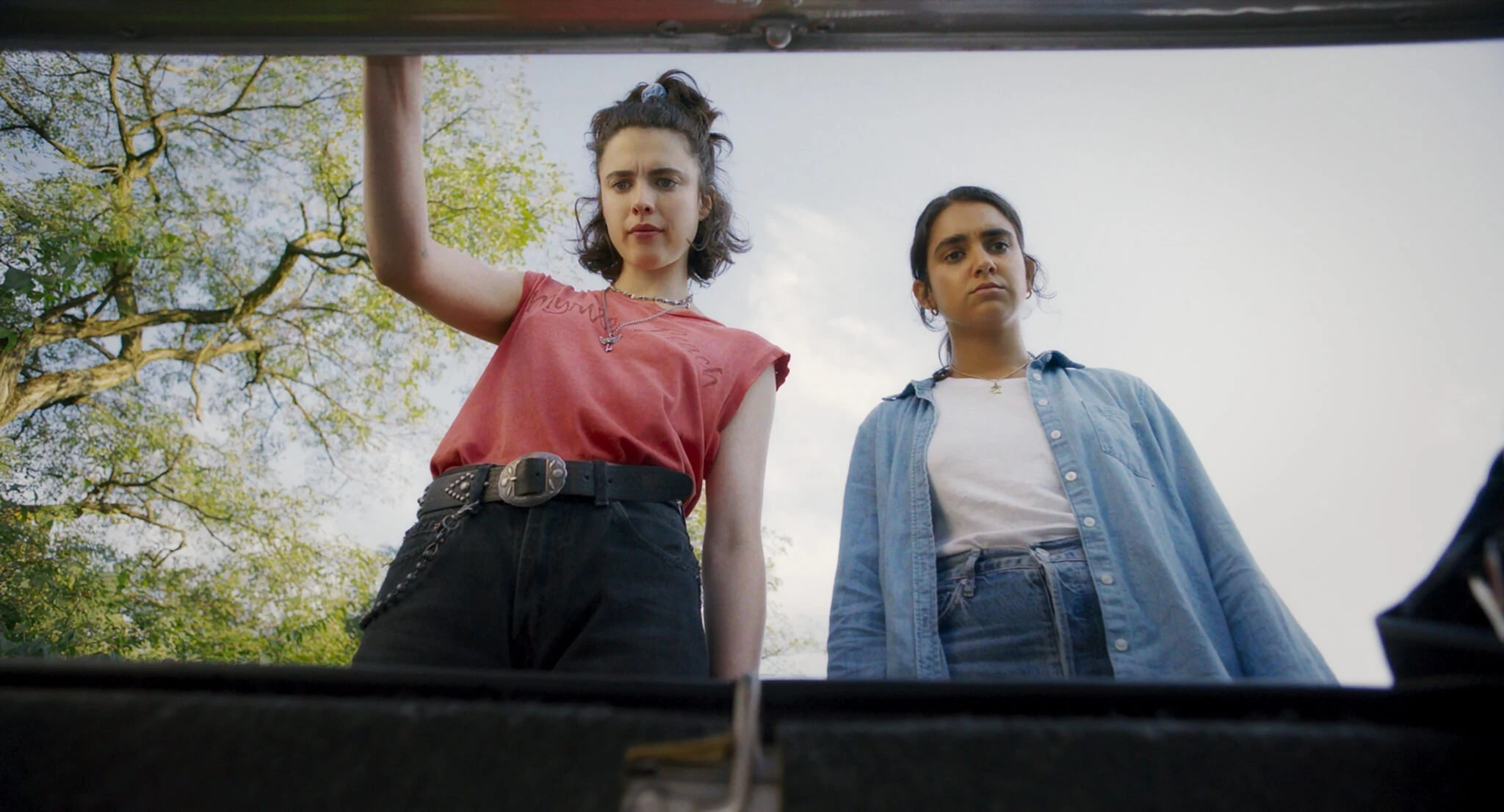
(L-R) Margaret Qualley as Jamie and Geraldine Viswanathan as Maria in Drive-Away Dolls, a Focus Features release. Courtesy of Working Title / Focus Features
Drive-Away Dolls‘ Inspiration
Though Coen is the film’s credited director, Cooke was effectively co-director as well as co-writer, and Drive-Away Dolls draws heavily on her own experiences in lesbian bars in the late-1990s and early 2000s.
At the start of the story, Beanie Feldstein, who plays the cop girlfriend of Qualley’s Jamie, catches her in bed with another woman. Soon Jamie invites herself along on a road trip with her friend Marian, played by Viswanathan, from Philadelphia to Tallahassee, Florida. Marian reluctantly agrees to stop at every major lesbian bar on the East Coast, where Jamie gets the two into many misadventures.
The supporting cast is a Coen-worthy coterie of actors including Colman Domingo as a crime boss; Matt Damon as an evil senator with a dildo problem; Bill Camp as a witless car-rental agent; and Joey Slotnick and C. J. Wilson as bumbling criminals. A briefcase-carrying, trenchcoat-clad Pedro Pascal plays a key role as well.
The road trip and crime elements share some similarities with No Country for Old Men, the Coens’ stately 2007 Cormac McCarthy adaptation that won four Oscars, including for adapted screenplay, directing and Best Picture.
But Drive-Away Dolls is a very different movie — Cooke promises it’s “a little trashy,” and told Collider in an interview last year: “Ethan and Joel make highbrow movies, and we make lowbrow movies.”
Asked to elaborate, months later, she explains: “I’m not implying they have intentions to make pretentious, arty movies, but often they do make movies that are taken very seriously,” says Cooke. “I don’t know if anyone would ever take Drive-Away Dykes or Drive-Away Dolls very seriously.”
Ethan Coen chimes in under a chuckle: “I’m sitting on a lot of resentment when you say me and Joel have made important movies.”
“You made Cormac McCarthy movies!” Cooke shoots back.
“That’s Cormac’s fault, man. That doesn’t come from us,” laughs Coen.
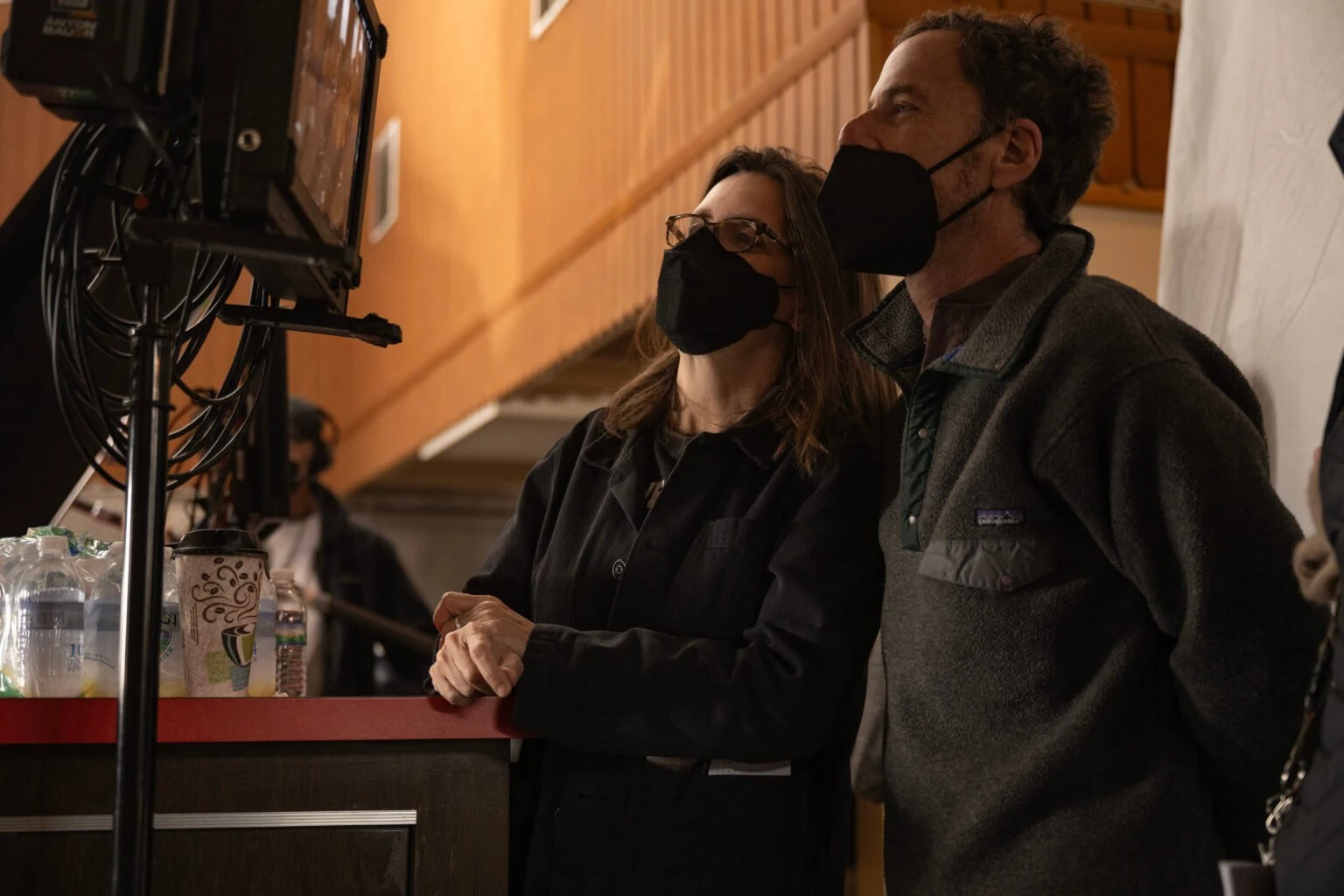
(L-R) Writer/producer Tricia Cooke and director/writer/producer Ethan Coen on the set of DRIVE-AWAY DOLLS, a Focus Features release. Credit: Wilson Webb / Working Title / Focus Features
‘Dolls’ vs. ‘Dykes’
Coen and Cooke use their original title and the film’s release title interchangeably as they discuss it. Coen blamed the change from Dykes to Dolls on “the squares at the studio.” The Motion Picture Association and advertisers also present some problems.
“It’s also that ‘dykes’ is considered a slur in some areas, so they didn’t want to use that title, but the title was the origin of the entire idea,” says Cooke. “I came up with the title and then wrote the script.”
“It was like old-fashioned Hollywood. We started with the title and wrote the movie to fit the title,” says Coen.
The couple’s friend Allison Anders — the indie groundbreaker known for Gas Food Lodging, Mi Vida Loca and Grace of My Heart — was briefly attached to direct. But no one would finance the film in the aughts, in part because Hollywood was still so old-fashioned in its beliefs about the bankability of queer films.
But things change.
After their stunning 2018 Western The Ballad of Buster Scruggs, Joel and Ethan Coen took a break from working together. Ethan took a sabbatical from filmmaking while Joel made 2021’s well-received The Tragedy of Macbeth.
During Ethan Coen’s break, he and Cooke’s friend T Bone Burnett, the musician, producer and archivist whose work with the Coens goes back to The Big Lebowski, asked the pair if they’d like to make a documentary about musician Jerry Lee Lewis. Covid had turned Coens’ planned break into an enforced lockdown, and he and Cooke jumped at the chance.
“We were both going crazy. The documentary was an opportunity to make a movie in our living room during lockdown,” says Coen.
Cooke and Coen enjoyed working together again, and the A24 documentary Jerry Lee Lewis: Trouble in Mind, which he directed and she edited,debuted at the Cannes Film Festival in 2022.
They decided to keep a good thing going — and returned to their unmade script for Drive-Away Dykes.
“We thought it would be fun to make and see if someone will finance it now,” says Cooke.
As they reflected on why the film hadn’t been made in the 2000s, they thought a lot about highbrow vs. lowbrow considerations. It was possible to make an LGBTQ+ movie, decades ago, if the budget was low. The Samuel Goldwyn company released the earnest lesbian drama Desert Hearts, budgeted around $1.5 million, in 1985, and made a respectable profit.
The distributor also released 1994’s comedy Go Fish, directed and co-written by Rose Troche and starring co-writer Guinevere Turner, which was made on a small budget and earned its money back many times over.
But Drive-Away Dolls couldn’t be done on a microbudget.
“We were just talking about Gregg Araki’s Mysterious Skin, which is a really good movie. But it was made for very cheap, and the story was serious,” says Coen. “At that time, it was possible for the industry to conceive of serious gay stories, but not trashy, stupid gay stories. It just didn’t compute.”
Of course, there’s plenty of underselling going on when filmmakers of Coen and Cooke’s caliber claim to be making a trashy movie. Coen brothers’ films have always struck a delicious balance between high and low. But Drive-Away Dolls will still provide a test of whether a big, not-cheap, and occasionally trashy lesbian movie with A-list stars can connect with audiences.
What, me worry?
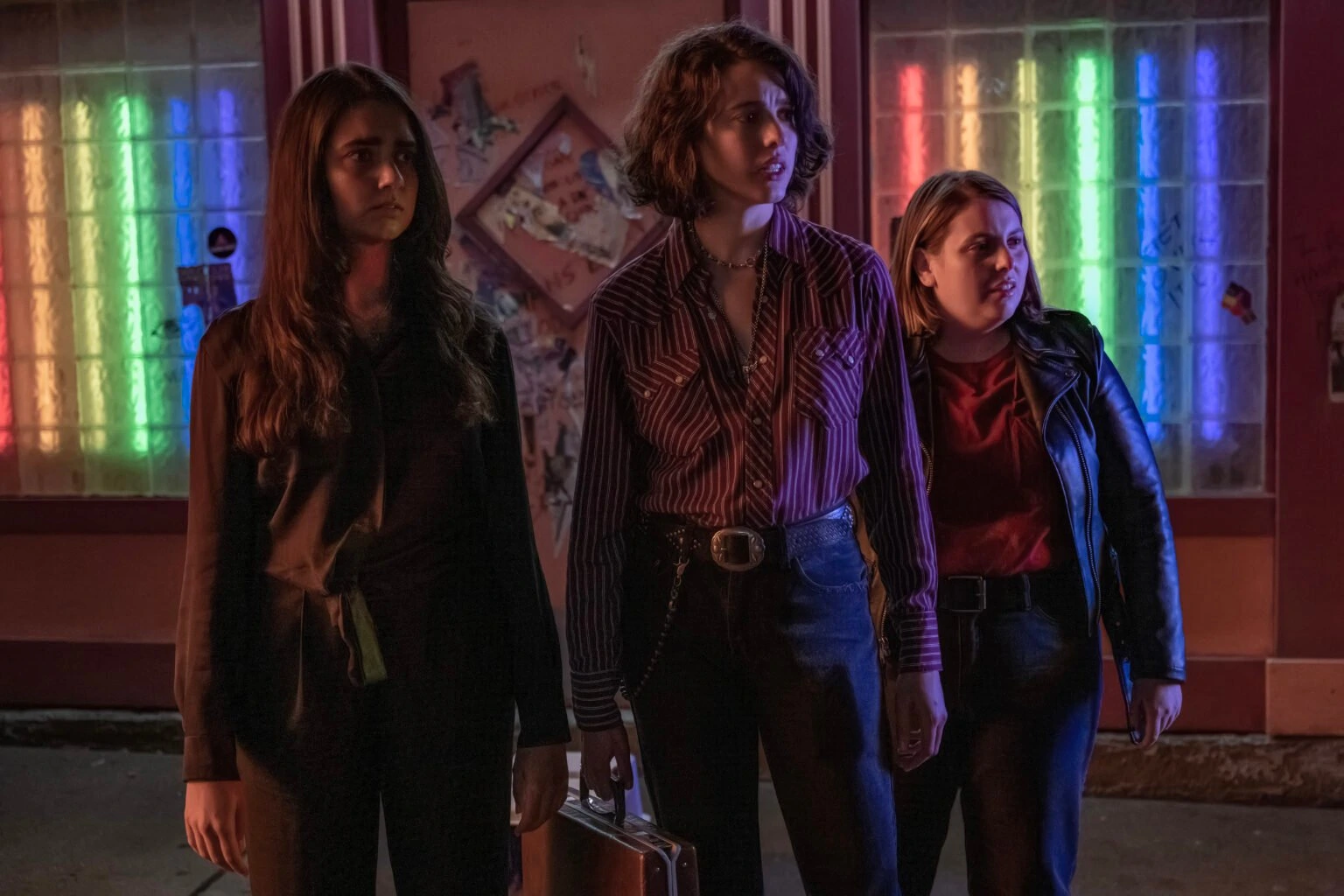
(L-R) Geraldine Viswanathan as Marian, Margaret Qualley as Jamie and Beanie Feldstein as Sukie in Drive-Away Dolls, a Focus Features release. Photo Credit: Wilson Webb / Working Title / Focus Features,
Tricia Cooke on the Golden Age of Lesbian Bars
Among other things, the film serves as a tribute to America’s lesbian bars.
In 2023, The Lesbian Bar Project, a campaign launched in 2020, reported that the United States has only about 30 lesbian bars left, down from about 200 in 1980. Drive-Away Dolls was a contemporary story when it was conceived, but now it’s a period piece featuring fictional lesbian bars inspired by those that have closed up shop.
“Sugar and Spice, in the movie, is based on a bar I used to hang out in Brooklyn called Cattyshack. There were go-go dancers and that kind of hipster scene was definitely a big part of the late ‘90, early 2000s when I was spending more time in lesbian bars,” says Cooke.
A pivotal scene in the movie takes place at a bar in Tallahassee that’s loosely based on Cubbyhole in Manhattan’s West Village.
“Having spent a lot of time in lesbian bars, we drew from Cattyshack and Cubbyhole to design our bars,” she says.
“We all laughed at the fact that Trish was the arbiter of what all the bars should look like,” says Coen.
“And where the wall dildo should be placed,” adds Cooke.
The golden era of lesbian bars might be behind us, but Cooke estimates that even when they were most popular, there were always at least five times as many gay bars in the country.
“When I was first coming out, most of the lesbian bars were just special nights at a gay bar,” she says.
The reason may be that men generally have more disposable income than women. Or it’s possible that lesbians are more integrated into society, and don’t need bars as much as they used to for sanctuary and comfort.
“For the queer community, at least in my experience, bars are one of the historically safe places that we could all come together and feel like a community,” says Cooke. “It’s tragic that there aren’t as many lesbian bars. There’s a town in Oklahoma that has as many lesbian bars as New York state.”
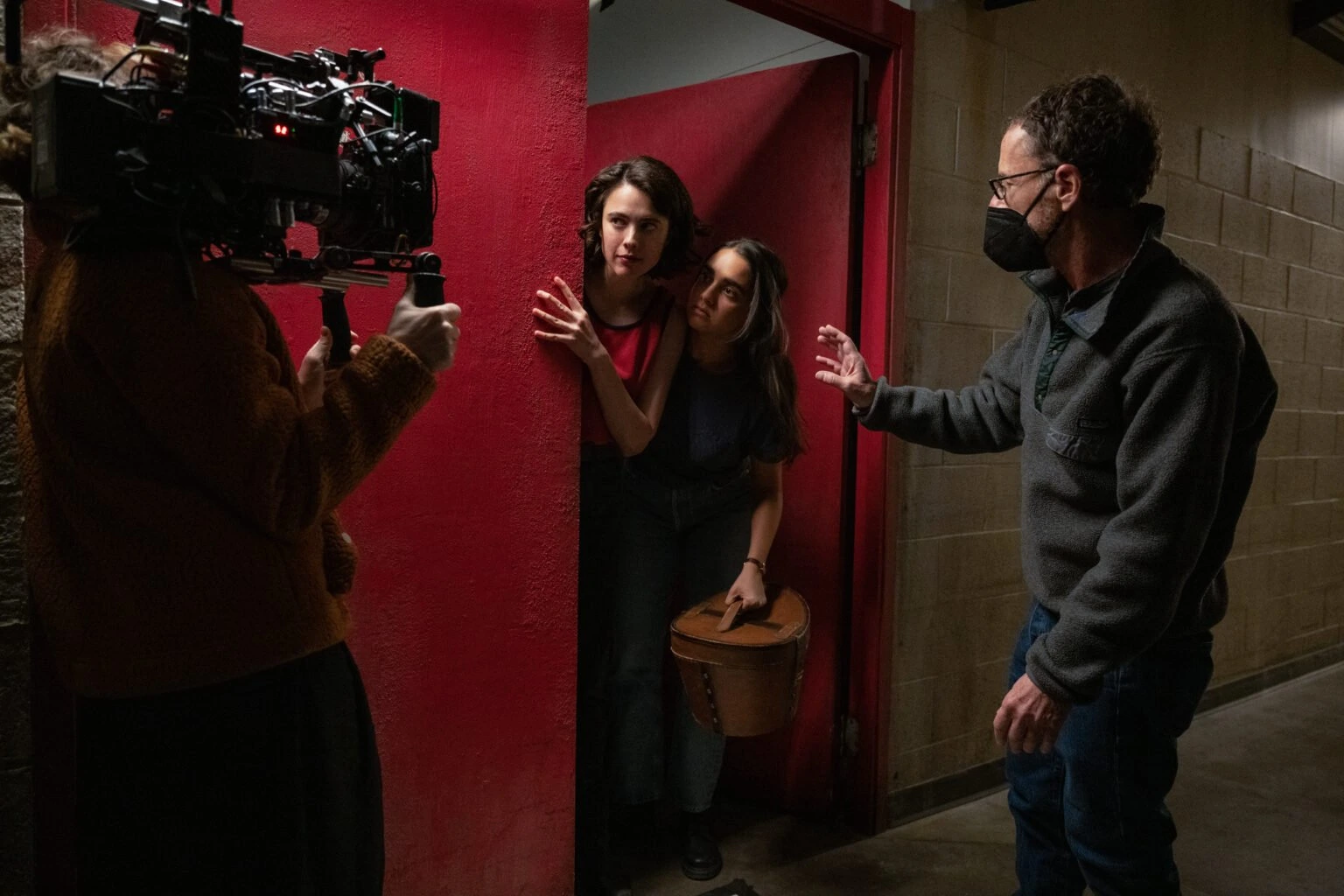
(L-R) Actor Margaret Qualley, actor Geraldine Viswanathan and director/writer/producer Ethan Coen on the set of Drive-Away Dolls, a Focus Features release. Photo Credit: Wilson Webb / Working Title / Focus Features
Ethan Coen and Tricia Cooke on Collaboration
There’s a long tradition of family collaboration on Coen productions — Joel Coen and his wife of four decades, Frances McDormand, met when she auditioned for 1984’s Blood Simple, which was the debut for both her and the Coen brothers, and she won the first of her three Best Actress Oscars for their film Fargo. When it came to who was credited as the director on Drive-Away Dolls, Cooke and Coen didn’t care.
“We never proposed to the Director’s Guild of America that they recognize us both as directors. We just didn’t give a shit about titles,” says Coen. “Since I was already the DGA member, I was the official director. The facts were kind of different, but we kind of didn’t care.”
He says they chose Qualley, Viswanathan and Feldstein to play Dolls’ main characters because they energized the material better than anyone else.
“What they really did was bring the story to life, which is totally simplistic, but I don’t know, man, what else do you say?” says Coen. “It’s either fake and dead or it’s alive, and they made it alive. We’ve all seen the fake and dead.”
Cooke says Qualley brought a free-spirited and carefree feel to Jamie and “Beanie came in and just kicked ass. She just totally embraced that tough-cop character.”
Coen says Viswanathan brought a lot of fun to her performance as the cosseted Marian.
“Her character’s a prissy person. Someone you can look at and know they’re no fun,” says Coen. “But Geraldine makes a no-fun character a lot of fun.”
Qualley and Viswanathan are just as complimentary about their directors.
“There was always such a playful element to their approach,” says Viswanathan. “It never felt restrictive or like we had to execute his vision.”
She adds: “We had such a reverence for them and they would immediately undercut that by being so down to earth and having this excitement to play and be silly, which I think made everyone really excited. It’s not always like that.”
Qualley says that when she wanted feedback, she looked to both Coen and Cooke: “As an actor, you always want to please your director, and between every take I would look at Ethan and I would look at Tricia. I’d lock eyes with each person to see if either one has a note.”
Cooke and Coen always seemed “in tune” with each other’s decisions, she says: “They’re not asking for permission from each other.”
She adds: “Tricia says that she doesn’t want to direct alone. She said she has no ambition to do that.”

(L-R) Director/writer/producer Ethan Coen, writer/producer Tricia Cooke and director of photography Ari Wegner on the set of Drive-Away Dolls, a Focus Features release. Photo Credit: Wilson Webb / Working Title / Focus Features.
Atmosphere
When it came time to choose a cinematographer to bring their road-trip story to the screen, they turned to Ari Wegner, the director of photography behind Janicza Bravo’s electrifying stripper road-trip movie Zola. Then they realized she had also shot a recent Jane Campion Best Picture nominee that couldn’t look less like Zola.
“We thought, wow, we want this person to shoot Drive-Away Dykes,” says Cooke. “And then realized she had shot The Power of the Dog.”
“Those movies are so different. One is kind of vérité and one is very composed,” says Coen. “Ari wants to serve the movie and is technically great.”
Both Zola and Drive-Away Dolls feature many scenes in different hotel rooms, and Cooke thought Wegner’s expertise in shooting those interiors would work to Dolls’ benefit.
“She made each room in Zola look different and really interesting. We thought, you know, that would work for us,” says Cooke.
“We had four hotel rooms in Zola and they each needed a different atmosphere. More specifically, we wanted each room to have a different flavor… to pile on to whatever Zola was dealing with in each one,” says Wegner.
“On Drive-Away Dolls, our aims weren’t a mile away actually — to give each hotel room its own atmosphere — a room that seems archetypal, but what you’re seeing happening in it is far from it.”
Wegner describes her experience working with Cooke and Coen as “harmonious and a lot of fun.”
“Working with someone who has lived the world the film is set in is incredible. So for any decisions of atmosphere, tone, plausibility or authenticity, Tricia was always the go-to,” says Wegner.
She adds that Coen is one of the few directors who can close their eyes and envision a scene.
“Most of my job was making sure I was seeing what Ethan was seeing before we got to shooting. If I had an idea, it was simply a matter of checking if the idea was more or less interesting than what he can see in there,” she says.
“To be honest, I love Ethan and Tricia’s taste, so it was a dream working relationship.”
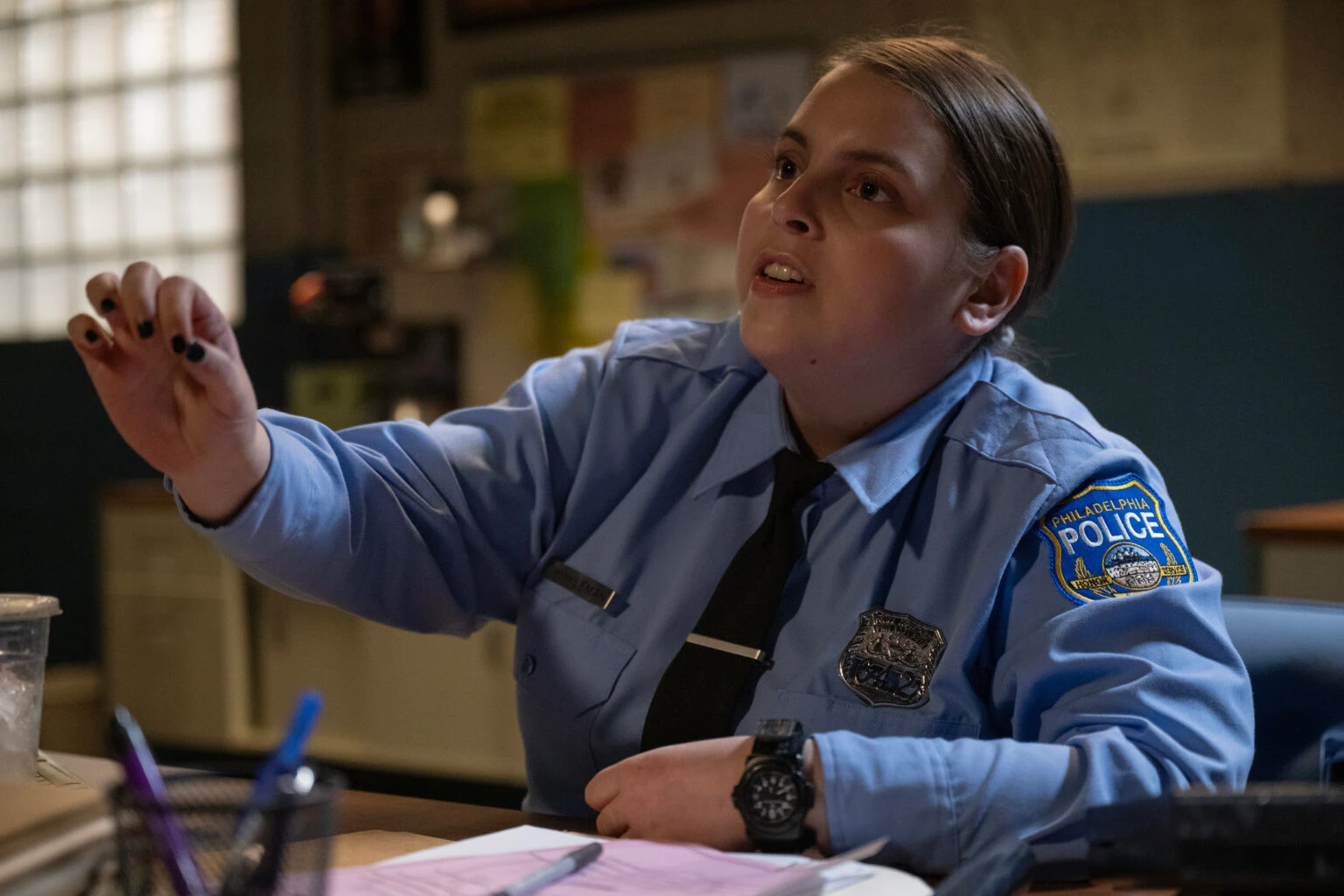
Beanie Feldstein as Sukie in Drive-Away Dolls, a Focus Features release. Photo Credit: Wilson Webb / Working Title / Focus Features
Intimacy in Drive-Away Dolls
Drive-Away Dolls announces its sexuality right away with a sloppy, wet, explicit sex scene. Though the film nods to the exploitation flicks of decades past, the filmmakers took a modern approach to shooting it.
“Not having familiarity with intimacy coordinators, I didn’t know what to expect,” says Coen. “I thought it might be a resident pain in the ass, but ours was Chelsea Pace, and she was great. An intimacy coordinator, properly understood, is really helpful and useful.”
Pace is trained as a movement instructor. Coen compares her work to that of a stunt coordinator who helps figure out what a shot needs and how the actors need to move to achieve it.
“She helps demystify and release tension around intimacy issues,” he says.
Cooke worked with Pace to design the scenes.
“Shegave us ideas about what the actors should do with their bodies in a sex scene,” says Cooke. “Some of her ideas are based on a movement seeming sexy to her.”
“It’s hard, because everyone is a little… not intimidated, but it’s not the most comfortable days on set when you’re shooting these sexually intimate scenes,” Cooke adds. “Chelsea made everyone feel more comfortable.”
If Drive-Away Dolls works out for them, Cooke and Coen have another movie in mind to make next. They promise it won’t be too highbrow.
“It’s about a reunion of a college crew team. But it’s pretty trashy,” says Coen.
Laughs Cooke: “It’s called Go Beavers.”
Drive-Away Dolls arrives in theaters February 23, from Focus Features.
Main image: (L-R) Writer/producer Tricia Cooke, director/writer/producer Ethan Coen, actor Margaret Qualley, and actor Geraldine Viswanathan on the set of Drive-Away Dolls, a Focus Features release. Photo Credit: Wilson Webb / Working Title / Focus Features.
Share:
Like this project
Posted Jan 19, 2024
How Tricia Cooke and Ethan Coen collaborated on Drive-Away Dolls, a lesbian road trip movie decades in the making.
Likes
0
Views
21


